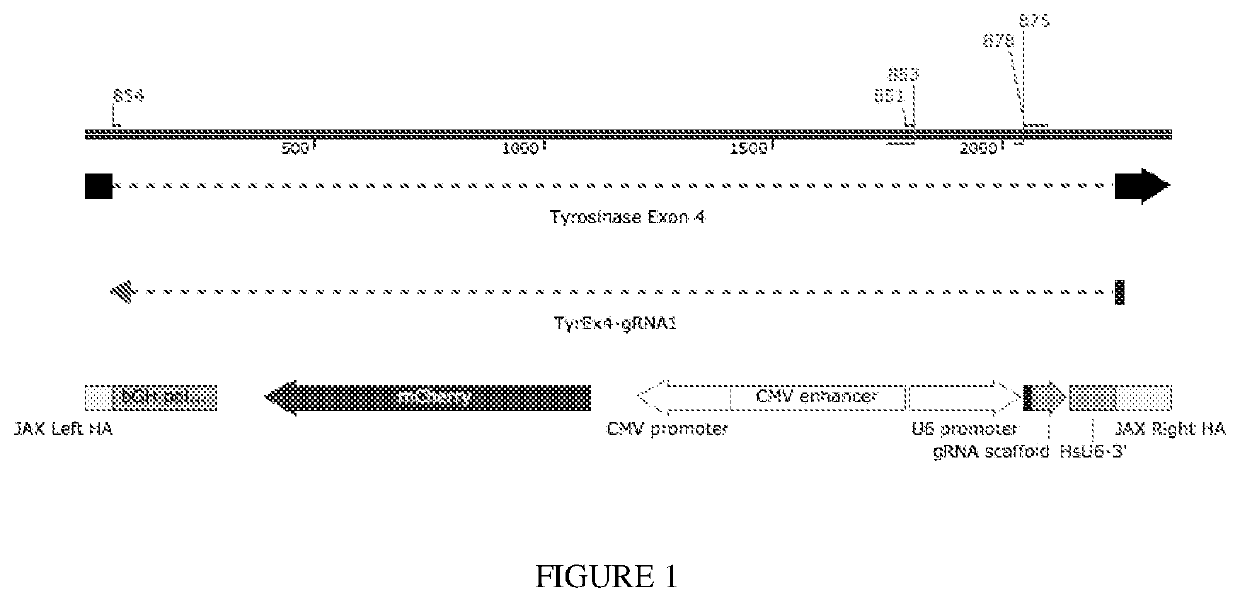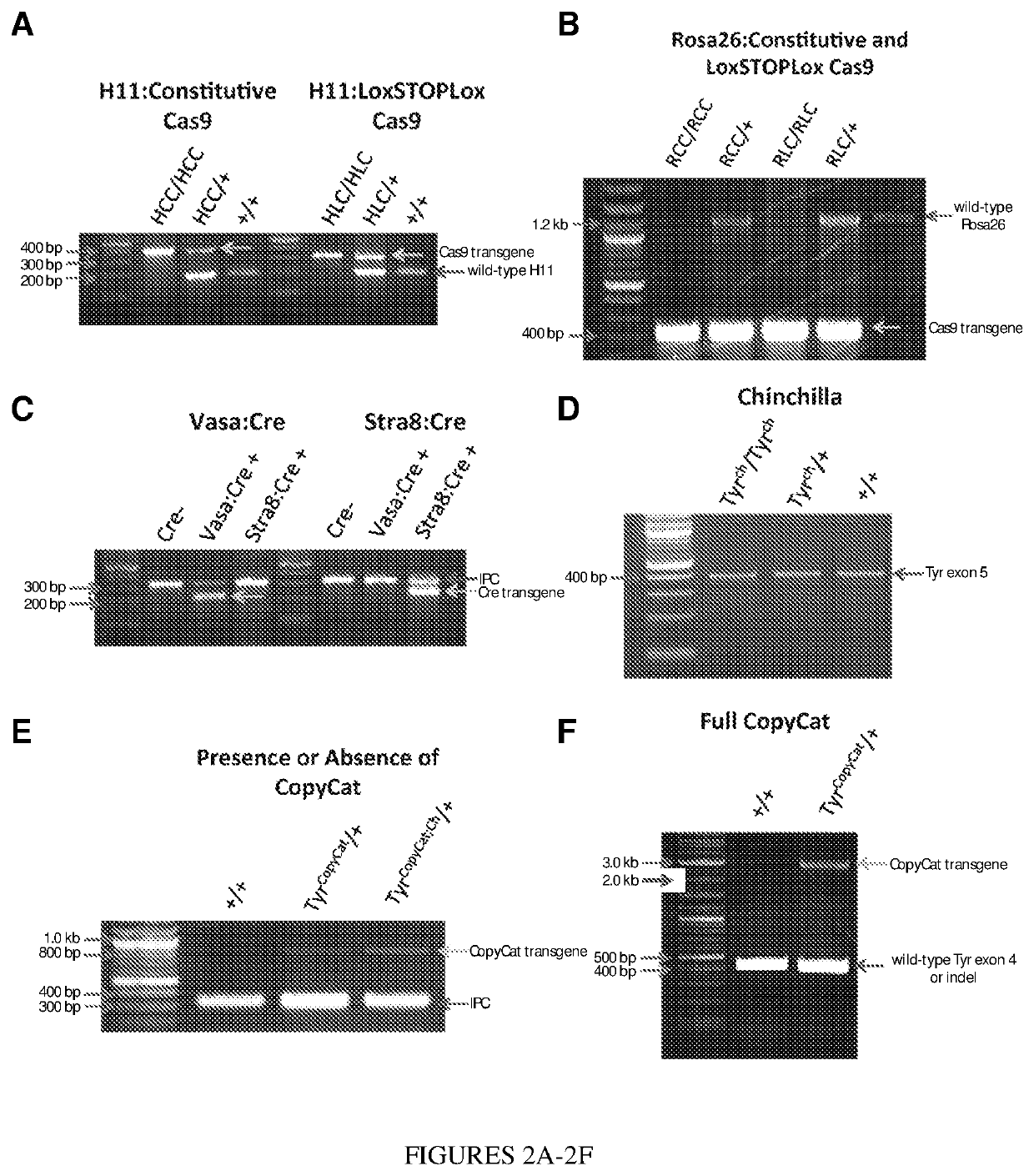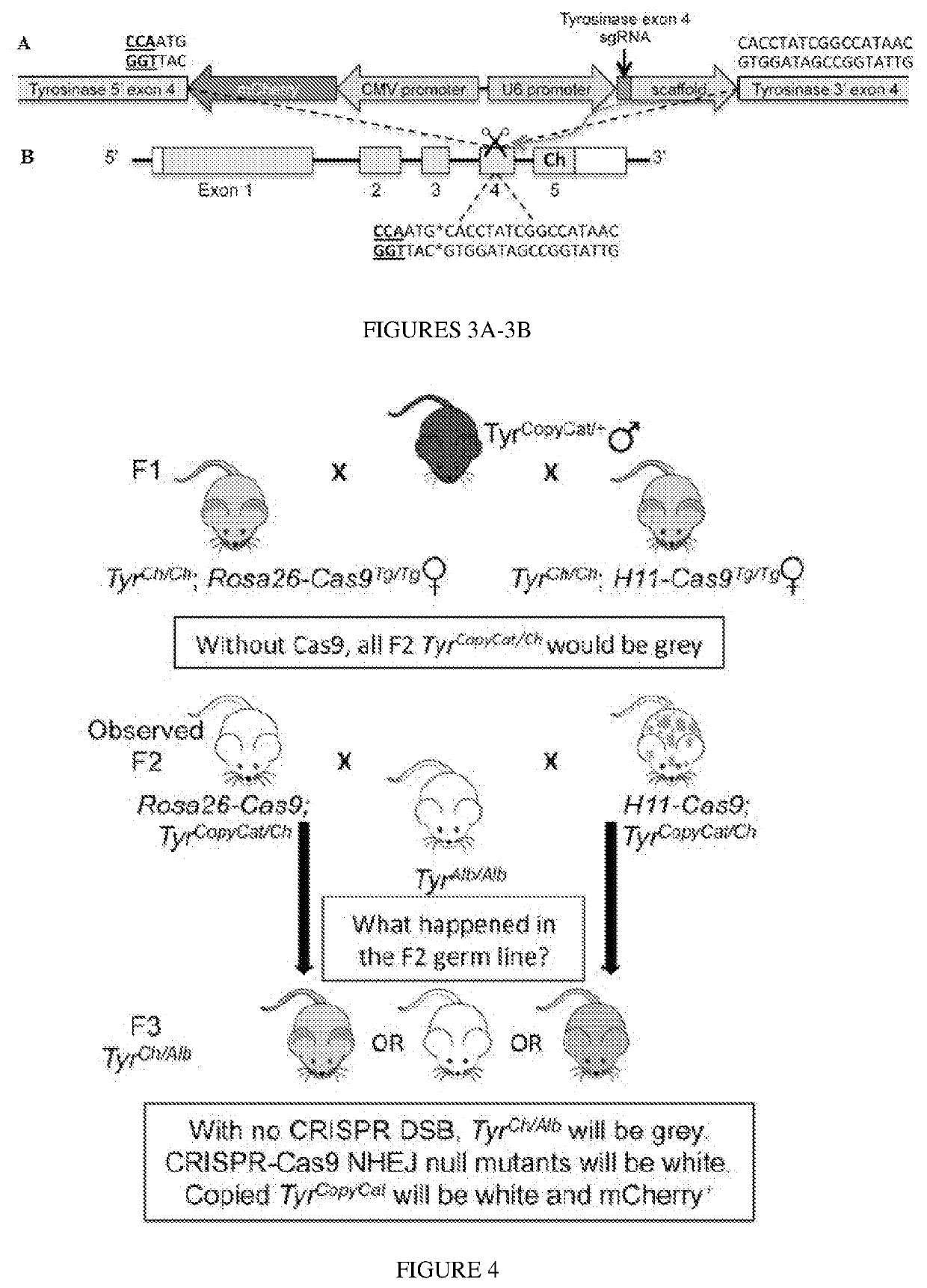Method to Implement a CRISPR Gene Drive in Mammals
a technology of crispr and gene, applied in the field of mammals to implement a crispr gene drive, to achieve the effect of eliminating the function of multiple genes, simplifying the husbandry of these strains, and reducing the number of grnas
- Summary
- Abstract
- Description
- Claims
- Application Information
AI Technical Summary
Benefits of technology
Problems solved by technology
Method used
Image
Examples
example 1
[0065]A representative locus was used to assess the feasibility of a CopyCat gene drive that can then be implemented more broadly. The TyrCopyCat element was inserted into exon 4 of Tyrosinase, the final enzyme of melanin biosynthesis. An sgRNA, designed to target the intact homologous chromosome, was transcribed from a constitutive human U6 promoter. On the reverse strand, mCherry was ubiquitously expressed using the CMV promoter and enhancer. Since the 1.75 kb insert disrupts the Tyr open reading frame, TyrCopyCat is a functionally null allele.
[0066]Crossing the TyrCopyCat mouse to a Cas9 transgenic mouse produced offspring that were heterozygous for both Cas9 and TyrCopyCat In these mice, the Cas9-sgRNA complex was expected to cleave the intact target site of Tyr exon 4 on the non-transgenic homologous chromosome. The resulting double strand break (asterisks in FIG. 3B) would be repaired either by non-homologous end joining (NHEJ) to produce an indel or by inter-homologue HDR ini...
example 2
[0068]To determine whether a CRISPR-Cas9 gene drive is efficient in the early embryo, the two available “constitutive” Cas9 transgenic lines, Rosa26-Cas9 and H11-Cas9, that reportedly express Cas9 in all organs that have been assessed, were obtained. The TyrCh allele was crossed into each of these transgenic lines to genetically mark transmission of the target chromosome and bred both Cas9 and TyrCh to homozygosity (FIG. 4). TyrCh encodes a hypomorphic point mutation in exon 5, and homozygotes or heterozygotes complemented with a null allele have a grey coat color (8, 9). The G to C single nucleotide polymorphism can also be scored with certainty by PCR followed by DNA sequencing (FIG. 5).
[0069]Homozygous female Rosa26-Cas9; TyrCh / Ch and H11-Cas9; TyrCh / Ch mice were each crossed to TyrCopyCat / + males with the goal of uniting the paternally transcribed sgRNA and maternally provided Cas9 protein in the early embryo (FIG. 3C). In absence of a second loss-of-function mutation in exon 4 ...
example 3
[0086]A CRISPR-Cas9 gene drive system stands to revolutionize rodent breeding. If each desired allele is encoded as a gene drive element that contains an sgRNA designed to target the same genomic location in the wild type homologous chromosome, each locus will be “driven” to homozygosity in the presence of Cas9. Therefore, in order to combine three alleles, for example, a mouse with one gene drive element (A) would be crossed to a mouse that encodes Cas9. Offspring of this cross would then be crossed to mice carrying gene drive element B, and these offspring would be crossed to mice carrying gene drive element C. In the presence of Cas9 at each generation, these gene drive elements at three distinct loci will be converted to homozygosity such that 50% of offspring, those that inherit Cas9, will be triple homozygous after three generations, even if they are genetically linked loci.
PUM
| Property | Measurement | Unit |
|---|---|---|
| fluorescent | aaaaa | aaaaa |
| pesticide-resistance | aaaaa | aaaaa |
| size | aaaaa | aaaaa |
Abstract
Description
Claims
Application Information
 Login to View More
Login to View More - R&D
- Intellectual Property
- Life Sciences
- Materials
- Tech Scout
- Unparalleled Data Quality
- Higher Quality Content
- 60% Fewer Hallucinations
Browse by: Latest US Patents, China's latest patents, Technical Efficacy Thesaurus, Application Domain, Technology Topic, Popular Technical Reports.
© 2025 PatSnap. All rights reserved.Legal|Privacy policy|Modern Slavery Act Transparency Statement|Sitemap|About US| Contact US: help@patsnap.com



